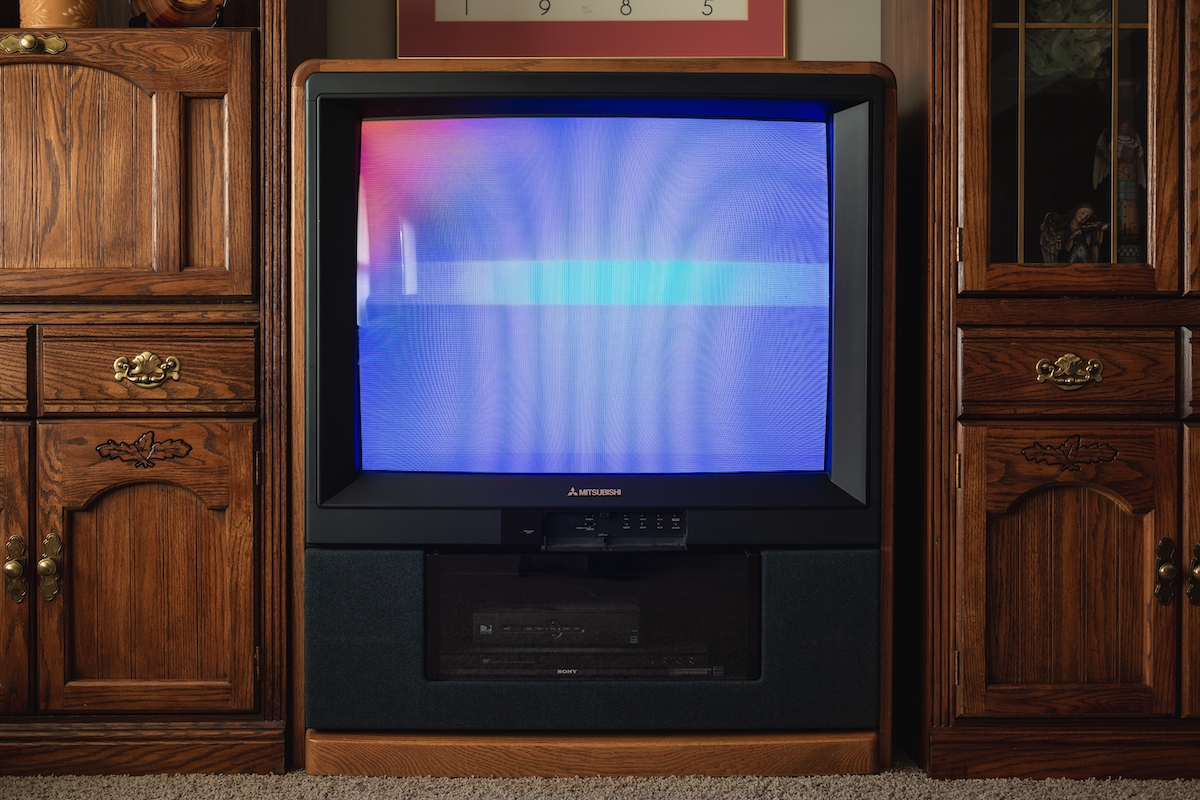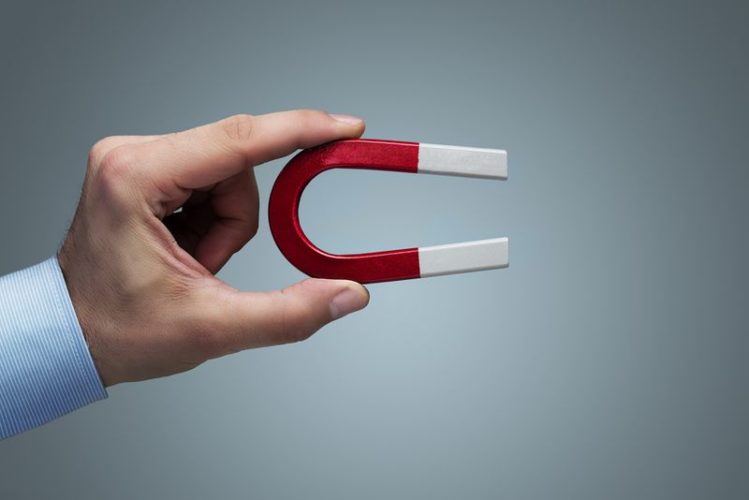Do Magnets Ruin Your TV Screen? Busting Myths About CRT, LCD & LED Displays

What To Know
- LCD and LED TV screens are immune to magnet interference, unlike old CRT displays that can be permanently damaged by magnets.
- Modern televisions, utilizing LCD and LED technologies, do not use electron guns or magnetic field guidance, making them resistant to magnetic distortion.
- If a CRT TV screen is discolored by a magnet, it may require demagnetization, either via a built-in degausser or a manual degaussing process.
This article will discuss magnets and their relevance in CRT display technology. Want to know how they affect CRT, LED, and LCD TVs? Keep reading!
Quick Navigation
Why Do Magnets Affect Old TVs but Not Modern Ones?
Before the introduction of modern TVs, older TVs used CRT technology displays. Unlike LCD and LED displays, this type of display is highly susceptible to magnets.
CRT (Cathode Ray Tube) displays used pixels made up of phosphor-based compounds and an electron gun.
These phosphor-based pixels light up when the electron gun shoots electrons onto them.
The CRT uses a magnetic field to guide the electrons, ensuring they fall on the appropriate pixels. A magnet too close to the TV can interfere with the electron gun’s magnetic field and misguide the electrons.
When electrons fall on the wrong pixels, it causes discoloration on the TV screen. The intensity of this discoloration depends on how strong the magnet is and how long you exposed the CRT TV to it.

Modern TV technology has evolved beyond CRT technology. We now have plasma, LCD, and LED TVs.
Unlike CRT TVs, LCD TVs use liquid crystals and backlights. They are immune to magnets because they do not have electron guns or a magnetic field guiding system.
LED TVs use light-emitting diodes (LEDs) as their backlight, but they still use LCD technology. Both plasma and LED TVs do not function on CRT principles, so they are unaffected by magnets.
Can Magnets Permanently Damage TV Screens?
Yes, magnets can cause permanent damage to a CRT TV screen but are not harmful to LCD or LED TV screens.
The intensity of the damage a magnet causes depends on its strength and the duration of exposure.
When a magnet misdirects the electrons from the electron gun, they may fall onto the wrong pixels, resulting in visual distortion.
The misdirection can leave a permanently bright or dark spot on the screen. Even worse, the affected area may not produce any color because the external magnetic field displaces electrons, preventing them from hitting any pixels.
Should I Demagnetize a TV?
If a magnet has affected your TV’s visual display, then yes. It would be best if you demagnetized it.
Demagnetizing is the process of correcting or repairing the visual distortion caused by an external magnetic field on a CRT TV. It aims to restore the TV’s original optical quality.
Some TVs come with a built-in degausser. A degausser is a machine that reduces or eliminates all traces of a magnetic field.
You must flip the degaussing switch at the back of the TV to activate the degaussing circuit.
On the other hand, some TVs do not have a degaussing circuit; they have to be demagnetized manually. Below is our step-by-step guide to the manual process.
How To Demagnetise a TV
First, buy a degaussing coil online or at any hardware/electronics shop.
You can use a magnet if you can’t find a degaussing coil. Follow the steps below carefully and accurately.
Step 1: Turn on your TV. This is necessary to monitor the process and ensure you are doing it correctly.
Step 2: Aim the degaussing coil (or magnet) directly in front of the TV and slowly wave it in a circular motion across the entire screen.
If this causes a rainbow effect on the screen, don’t fret. It means it is working.
Step 3: Retract the coil from the screen by a few inches — repeatedly wave it in a circle while stepping away from the TV until the rainbow effect is no longer visible on the screen.
Step 4: The distortion on your screen should be gone now. Set the coil aside.
Step 5: Turn off your TV and power it on again.
Note
- If the distortion is still evident, repeat the process, focusing more on the affected area.
- Make sure the degausser does not make contact with your TV screen to avoid leaving scratches on the screen.
- Maintain a reasonable distance between the coil and the TV to moderate the magnetic strength and avoid damaging your TV.
Understand Magnets

Magnets are materials that generate electric fields which can attract other metals with magnetic qualities.
Magnets are made with metals that have magnetic qualities — like cobalt, nickel, and iron. These metals possess intrinsic magnetic properties that interact uniformly. Some magnets also contain the alloy Alnico, a mixture of cobalt, aluminum, and nickel.
Some metals can be magnetized, and others cannot. This is because some metals are weakly paramagnetic — the magnetic fields of other magnets cannot affect them.
How Do Magnets Work?
The movement of electrons creates magnetic fields. When unpaired electrons in a metal spin in the same direction, they create a magnetic field.

When you place a metal close to a magnet, the metal’s spinning electrons are attracted to the magnet.
Magnets are categorized into three based on their levels of magnetism. They include:
- Permanent magnets:
These types of magnets contain hard metals, which have powerful magnetic abilities. Permanent magnets can only lose their magnetism due to heat, physical damage, or natural demagnetization over time. - Temporary magnets:
For temporary magnets, magnetism is only present when exposed to a magnetic field. An example is needles sticking to each other because one is in contact with a permanent magnet, which ignites its magnetism. - Electromagnets:
Electromagnets consist of conductive material (i.e., wire) wrapped around a metal core. Connecting the conductive material to an electric source generates a magnetic field, which is intensified by the metal core.
Conclusion
TVs with CRT displays have phased out, as people are upgrading to modern TVs with newer display technologies like LCD.
Modern LCD and LED TVs are not affected by magnets. However, if you still have a CRT TV and its image is distorted by an external magnetic field, you know what to do.
Locate the built-in degausser at the back of your TV and flip the switch. You can buy one and manually demagnetize your TV if there’s no built-in degausser. Cheers!
Gabriella ‘Diogo is a technical writer with a vested interest in tech hardware and equipment. She shares her knowledge and processes in an easy-to-grasp, lighthearted style. When she’s not testing or researching device performance, you’ll find her writing short stories or rewatching episodes of her favorite sitcoms.

